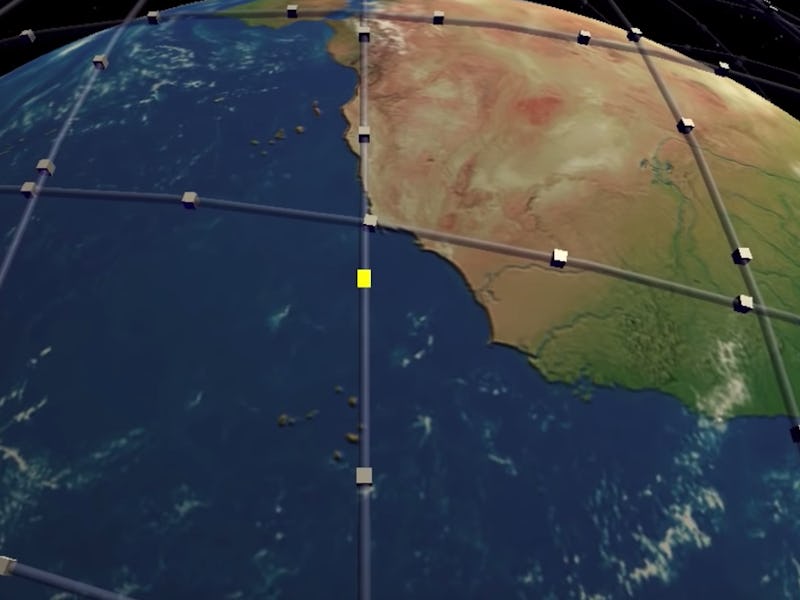SpaceX: Starlink documents reveal plans for a huge number of satellites
SpaceX's satellite constellation is set to rise even higher.

Starlink, SpaceX’s internet connectivity satellite constellation, is going to be huge. Like, really huge.
On Tuesday, it emerged that the company had filed paperwork for a further 30,000 Starlink satellites. That’s on top of the 12,000 already given the thumbs-up by the United States’ Federal Communications Commission. That means SpaceX is seeking permission to fill Earth’s orbit with a staggering 42,000 satellites.
To put that in perspective, Earth has around 5,000 satellites in orbit at the moment. That may seem like SpaceX is about to fill the sky, but it’s also important to note that the European Space Agency already has to avoid around 900,000 objects larger than one centimeter orbiting the Earth.
The Starlink project is expected to be a major source of revenue for the company in the coming years, potentially eclipsing its rocket launch business. The goal is to use thousands of small satellites to beam down internet access at high speeds, avoiding the high latency that has plagued previous satellite internet connections. The funds could help SpaceX spend money on its more ambitious ideas, like a trip around the moon and a city on Mars.
Eagle-eyed readers may note that the number bears similarities with the answer to life, the universe and everything, declared as 42 in Douglas Adams’ sci-fi novel The Hitchhiker’s Guide to the Galaxy. The book is a favorite of SpaceX CEO Elon Musk, and references have cropped up in the Falcon Heavy launch and The Boring Company tunnel-digging venture.
It’s unlikely SpaceX made the filing to make an elaborate reference to a cult sci-fi novel, but one thing’s for sure: Starlink is a monumental project for SpaceX.
Earth, surrounded by Starlink satellites?
SpaceX Starlink: what the company is asking for
SpaceX’s new filing, confirmed by SpaceNews, builds on a series of previous filings. The company already has permission from the United States’ Federal Communications Commission for 12,000 satellites.
In April, an approved plan explained that the initial version of the constellation would cover 4,409 satellites, each one weighing 850 pounds. In this April plan, 2,825 crafts would orbit at 1,150 kilometers away from sea level, while a further 1,584 would orbit at 550 kilometers. SpaceX claimed in these filings that this would bring latency down to 15 milliseconds.
In May, SpaceX launched the first 60 Starlink satellites, each weighing around 500 pounds. These crafts have already caused controversy, as astronomers claim that the crafts can be spotted shining in the sky. In September, the European Space Agency announced that its Aeolus satellite had to perform a maneuver to avoid the 44th satellite, which had dropped down to 320 kilometers as part of a deorbiting test. The agency claimed that it performed 28 such maneuvers last year, suggesting this is a relatively routine occurrence in space.
This new October filing would expand on even these early plans. The documents, submitted by the Federal Communications Commission to the United Nations’ International Telecommunication Union, cover 20 filings for 1,500 satellites in orbits varying from 328 kilometers to 580 kilometers. SpaceNews notes that these filings are done years in advance, but a filing does trigger a seven-year countdown where the operator has to launch at least one craft and operate it for 90 days.
SpaceX issued the following statement to the publication:
“As demand escalates for fast, reliable internet around the world, especially for those where connectivity is non-existent, too expensive or unreliable, SpaceX is taking steps to responsibly scale Starlink’s total network capacity and data density to meet the growth in users’ anticipated needs.”
A second Starlink launch was originally expected no earlier than October 17, but it’s now listed as to be determined. Despite this delay, it seems SpaceX is pushing ahead with big plans to fill the skies.